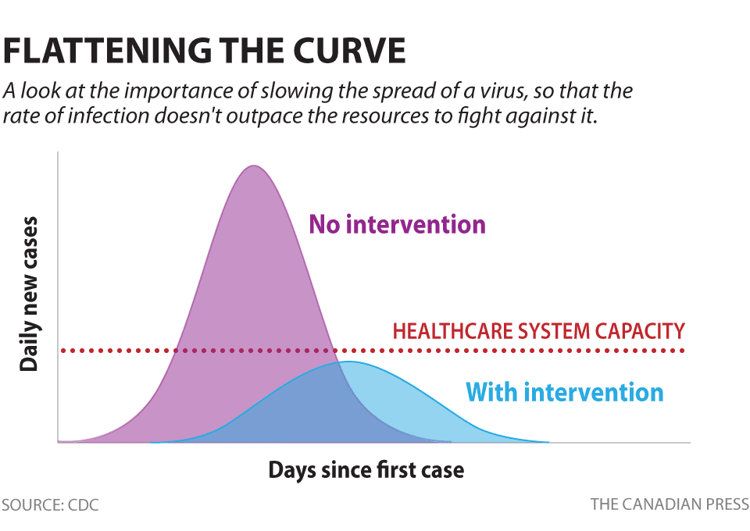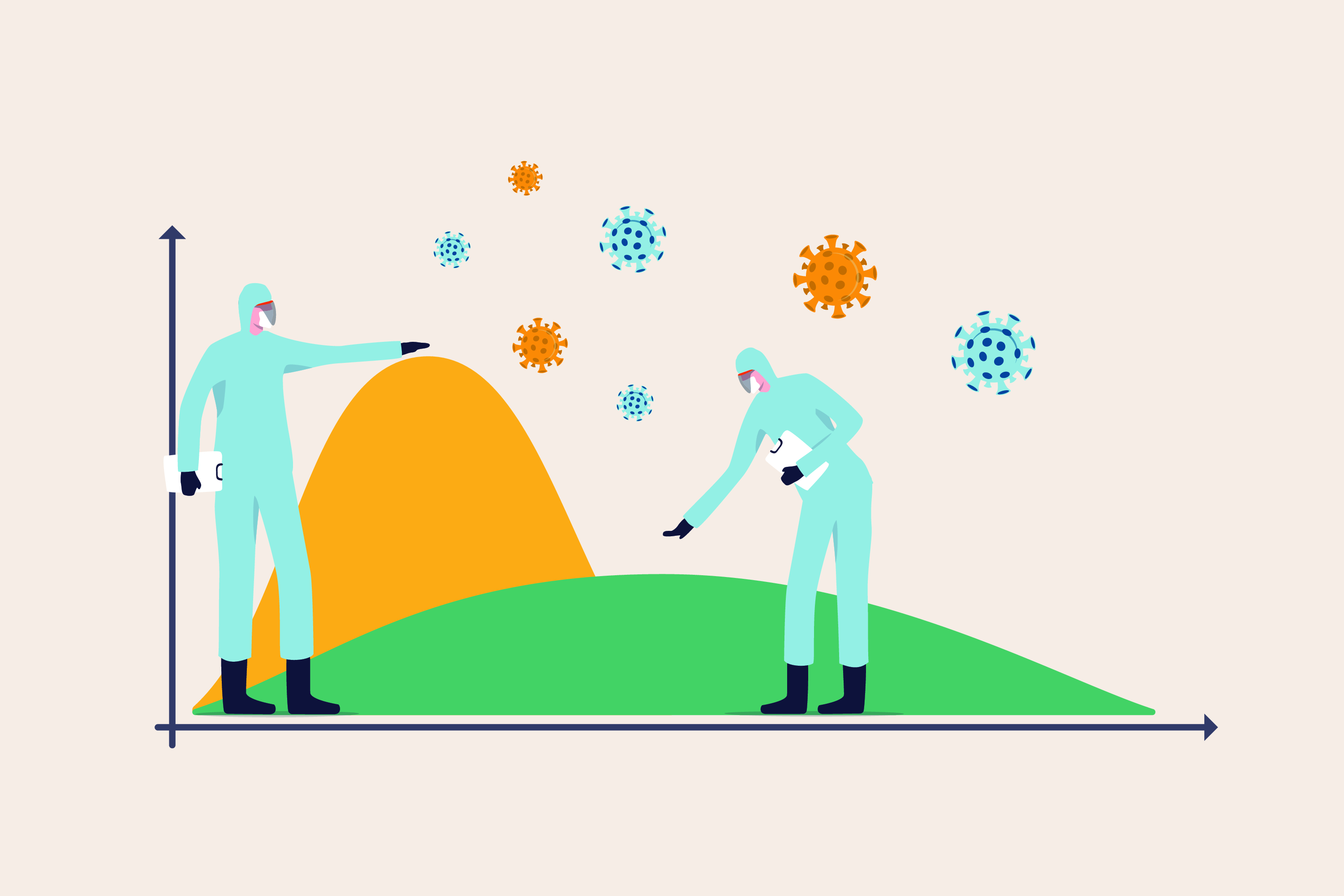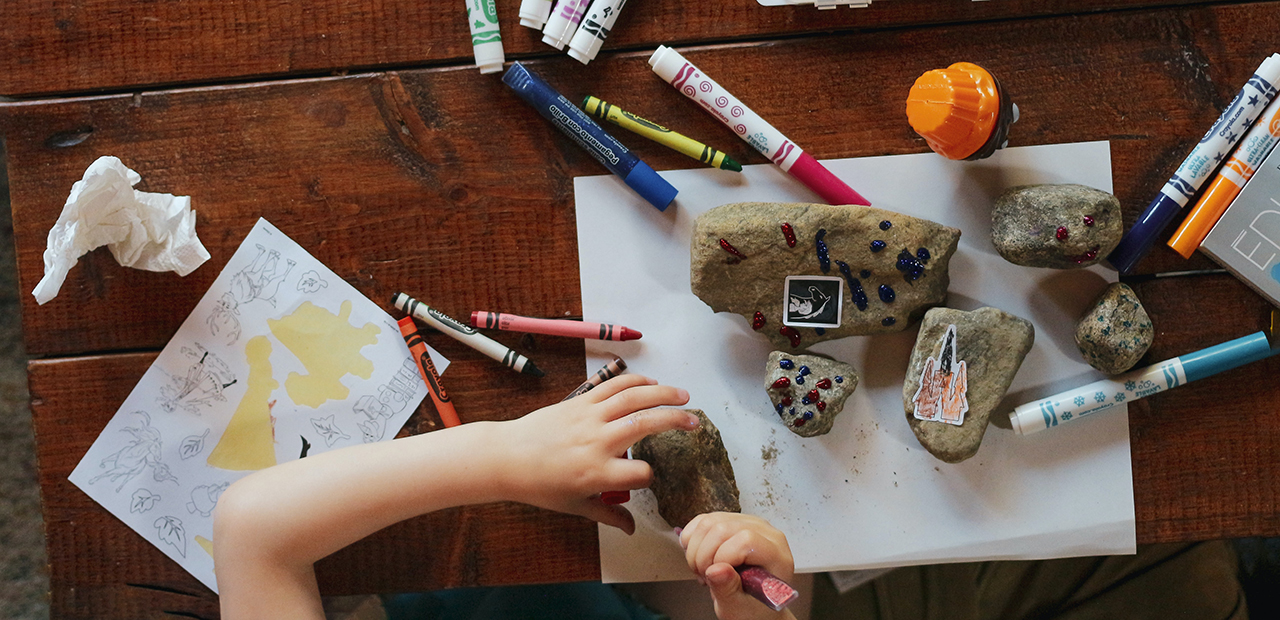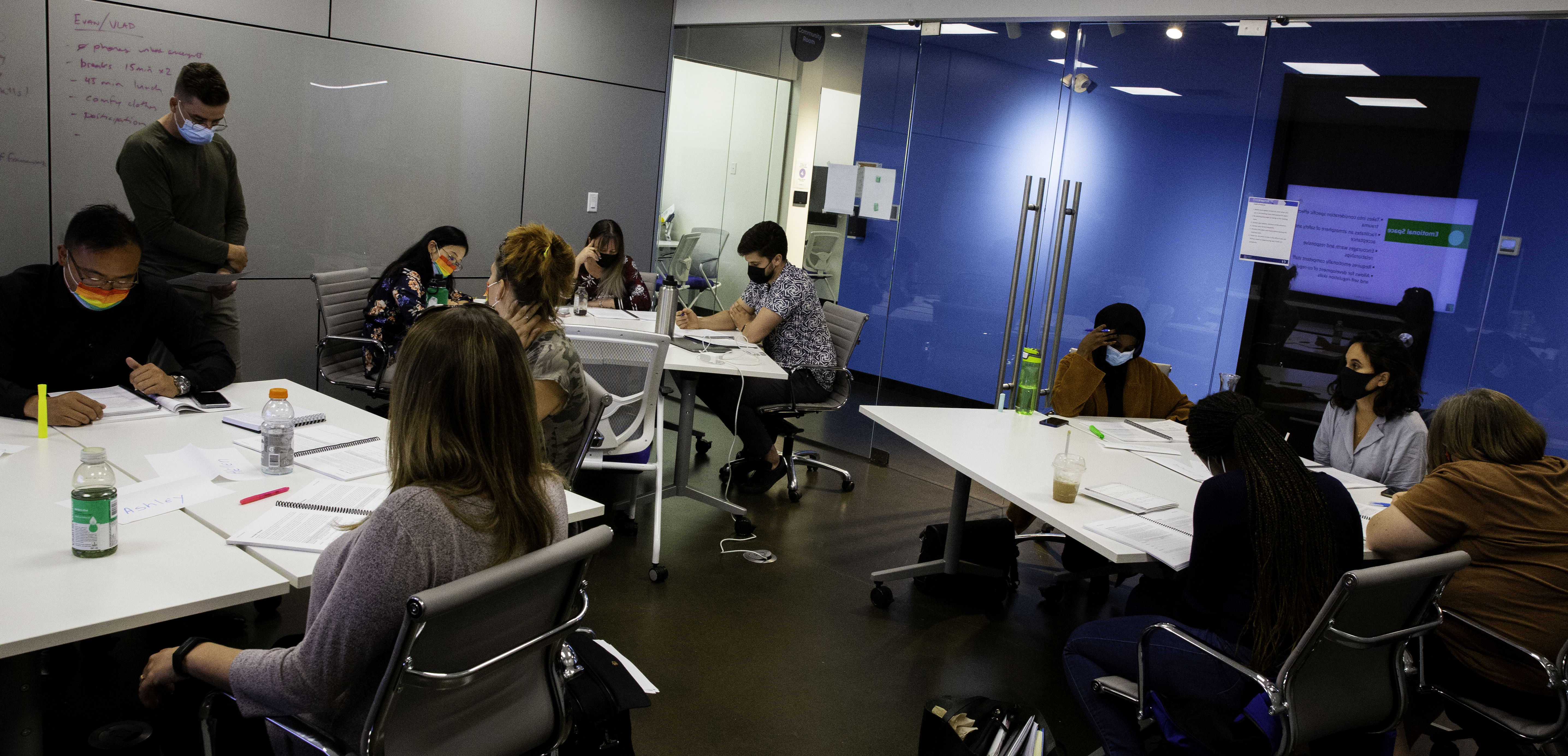We’ve all heard of the term “flattening the curve” by now, and know that everything we’re doing is with that goal in mind. But what exactly does it mean, and how does it help us deal with the Coronavirus pandemic?
The following graph will greatly help in explaining this concept:

Let’s examine 2 of the possible scenarios: Scenario A (Pink), and Scenario B (Blue).
Scenario A is the fast spread. In this scenario, the number of daily new cases GREATLY EXCEEDS the healthcare system capacity, and may even cause a dip in the capacity due to the heavy strain and pressure exerted on it. The result is a high number of deaths, but the disease will last over a shorter period of time.
Scenario B is the slow spread. In this scenario, the number of daily new cases remains AT OR BELOW the healthcare system capacity, and as a result, all cases can be treated and handled ideally. The result is a lower number of deaths, but the disease will last over a longer period of time.
In the interest of minimizing the cost of human lives, Scenario B is definitely favorable. “Flattening the curve” is the concept of taking action in order to intervene and ensure that we avoid Scenario A and move towards Scenario B. Steeper curves mean more cases in a shorter period of time, which will definitely overwhelm the system. A flatter curve means that the capacity of the healthcare system should ideally be enough to handle all the cases. Mathematically, assuming the total number of cases remain the same, we’re essentially spreading the cases over a longer period of time in order to keep it within capacity.
By “flattening the curve”, we can greatly slow the rate of infection, if not completely prevent it in the first place. Additionally, we can ensure that healthcare systems are not overloaded and can operate at full efficiency so that they are adequate at treating all those that require care. Italy is a prime example of Scenario A, where the number of cases had greatly exceeded the system capacity, ultimately leading to an exponential growth in the number of cases, and sadly, the number of deaths. Learning from this, our goal is to make every possible effort in flattening the curve to protect ourselves and those around us.
Frequently Asked Questions
What can I do to help flatten the curve?
- Abide by social distancing and isolation guidelines set forth by your local health authorities
- Wash your hands frequently and exercise healthy hygienic practices
- Wear gloves and/or a face mask if going out to public places where you may be in close contact with others
- Avoid all non-essential travel
- Stay at home to minimize unnecessary risk and contact with others
Is it safe to go back to my normal life?
We know that many people are starting to experience cabin fever during this quarantine period and are itching to go back, but is it safe to do so? It may seem like it’s okay to do so since the number of cases is decreasing on the downward curve, however, this is still the wrong thing to do. If the disease has not yet been completely eradicated, returning to regular social distance can ultimately bring about a “second wave” of infections, resulting in yet another new curve starting.
When you get injured, you take a break in order to fully recover before you go back to your full function. By continuing to stress that muscle without letting it fully recover, you end up exacerbating the injury, ultimately extending the recovery time perpetually. In the same sense, leaving quarantine too early will extend the life of the virus, so the best thing to do is to follow all recommendations and guidelines set by health officials, and only return to normalcy when they say it’s say to do so.






